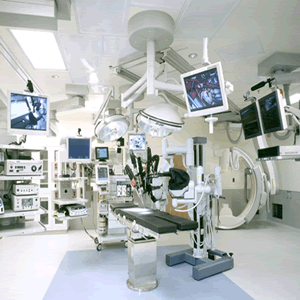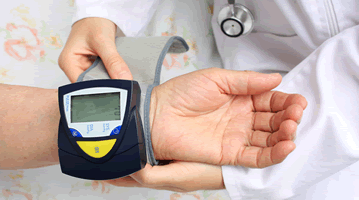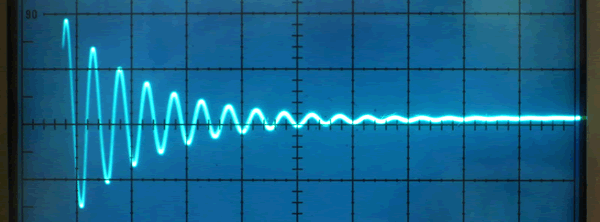Advancements in Medical Technology Demand Next-Gen Medical Connectors
Technological advancements throughout the medical market are dramatically enhancing the quality and accessibility of diagnostic information, improving patient treatment, and reducing infection rates. To support this rapidly evolving market, suppliers are being challenged to develop smaller, lighter, higher-speed, and higher-density medical connectors capable of handling big data, meeting demanding cost targets, and delivering additional capabilities, such as robust sealing.
Global Medical Market Conditions
Medical markets have taken a beating over the last couple of years. Efforts to constrain costs have put a lot of pressure on hospitals and outpatient facilities to restrain from buying new equipment. There is also a strong trend toward the consolidation of facilities and medical groups to offer better services more economically. Further, a vast proportion of medical personnel and capital expenditures are focused on how to get paid for the exams they perform. Much of this effort can be seen in the IT infrastructure that’s been developed to collect, store, analyze, and report data on patients, procedures, insurance, inventories, costs, and quality of service.
On the positive side, advancements in technology are dramatically improving the quality and accessibility of diagnostic information. Manufacturers of high-end CT, MRI, and PET scanners continuously improve image quality while significantly reducing patient exposure to radiation and improving the patient experience. Such developments put a lot of pressure on medical centers to procure the best technology to keep competitive.
 Most of the advanced developments still come from North America, Europe, and Japan, but the exploding potential in China, India, and other very large, underserved markets will assure continued growth in medical equipment for years to come.
Most of the advanced developments still come from North America, Europe, and Japan, but the exploding potential in China, India, and other very large, underserved markets will assure continued growth in medical equipment for years to come.
The worldwide medical device market was valued at over $339.5 billion in 2016. While the U.S. is currently the largest medical device market, medical company sales outside of the country are slowly edging out domestic sales. U.S. and European markets will no doubt retain their top-tier status in 2017, but medical device sectors across Asia appear primed for significant development this year. Asia, including Japan and China, currently accounts for 18% of current global healthcare spending, but is growing at more than twice the rate of North America and Europe, with China leading the way.
Increased sales to emerging markets during the next several years should help offset some of the anticipated cutbacks in major developed healthcare markets. However, these markets present their own set of challenges, namely operational and transportation logistics, workforce recruitment, and, in some cases, political and social unrest. The cost to manufacture overseas is also losing its advantage, with rising raw material and transportation costs, longer lead-times, and quality concerns.
Medical Market and Technology Trends

Advances in telehealth, wireless networks, virtual care solutions, and cloud computing are empowering health care providers to improve their business operations while giving them more time to provide quality care. The shift toward home or patient-centric healthcare has led to very rapid growth in personal healthcare monitoring, diagnostic, and preventive medical electronics. Additionally, the drive toward patient records portability has spurred a growth in information technology in the medical sector, as healthcare providers and insurance companies strive towards global accessibility of patients’ health records. Paperless healthcare recording is stimulating cloud storage of such records.
There’s also an increasing need to wirelessly network healthcare equipment. Higher density data interfaces are being adopted in medical equipment to ensure the secure routing of data signals for both internal and external interfaces. Wireless healthcare represents an opportunity to improve the healthcare system by making information sharing easier by enabling electronic access to lab and other test results that could help speed up diagnostics and decision-making. Many older healthcare facilities are being upgraded or retrofitted to accommodate these changing needs.
Medical imaging technology is expanding in several directions as well. High-end machines are adding computing power and more sophisticated sensors to enable enhanced images with reduced exam times. A second direction is toward smaller, more specialized machines, many of which can now be used outside of the radiology department. For example, specialized CT and MRI machines can be dedicated to study extremities, heads and necks, or mammography. These machines provide improved results with a more cost-effective investment. Further, as they proliferate to specialized clinics and private offices, they also result in more timely examinations.
Advances in sensor technology and the addition of many more micro-miniature sensors capable of providing detailed information about position, temperature, blood pressure, blood composition, and heart, brain function, and respiratory function are enabling enhanced equipment for monitoring patients in operating rooms, intensive care units, emergency facilities, and even in patients’ homes, extended care facilities, or while just walking around. Sensors in interventional devices dramatically improve outcomes from minimally invasive procedures while enhancing patient safety.
Imaging and monitoring modalities also generate a lot of data, which can be recorded to identify trends, set off alarms when results exceed set limits, and be saved to enhance the visualization of longer-term trends. Data from primary care doctors, specialists, and institutions can all be combined in the cloud and accessed as needed to help physicians quickly make a diagnosis and prescribe the right treatment. Additional advancements are accelerating as a result of machine learning, which is being used to help physicians arrive at better conclusions than they might by themselves. Big data is also increasingly employed to evaluate broader trends in infectious disease control and public health, tracking the spread of diseases and identifying factors that positively or negatively affect these processes. This combination of artificial intelligence, massive amounts of data, and many input sources has the potential to further advance medical diagnostics and treatments for years to come, significantly improving quality of life and longevity for millions of people.
Outlook: Medical Connectors

All of the aforementioned advances in medical equipment necessitate improvements in medical connector designs. For example, computing elements need higher-speed, higher-density interconnects to support higher-speed data acquisition and processing, and larger images with higher-resolution screens further add to the magnitude of data that needs to be processed.
Wireless capabilities that allow for data transfer without cables are increasingly important in medical environments. Additionally, since infection remains the biggest hazard in medical environments, using inductive power to charge small, completely sealed medical devices allows such equipment to be easily cleaned, sterilized, or even thrown away after limited use. This can help reduce infection rates, providing significant value to institutions and patients. Further, battery powered portable or handheld devices that can notably improve convenience for medical staff and patients require connectors that are smaller, thinner, and higher speed.
Many of the commodity connectors and cables used for oximeters, ECG, EEG, and other patient monitoring equipment are now provided by a host of connector and cable companies. Many are local to the country of use, and there are Chinese suppliers now who supply medical OEMs, distributors, hospitals, and medical supply houses with disposable products that are both cost effective and of good quality.
Some connector families, like push-pull circulars, have become commodities as well, especially at the cable assembly level. OEMs work hard to differentiate their products in a way that forces end users to buy cables and accessories from them, including intelligent devices that will recognize an alien cable and refuse to work with it. Medical connector customers demand a lot of customization regarding such characteristics as cable color, flexibility, and feel, and this forces OEMs to develop production processes that can cost effectively produce large varieties of connectors and cables with the various packaging, labeling, quality, and traceability features these customers demand.
Connector companies have responded by developing or acquiring capabilities to combine technologies, including: connectors, flex circuits, display screens, flex switches, sensors, catheters, antennas, and integrated assemblies into their portfolios. Some have even gone so far as to offer a portfolio of precision molded plastic parts and devices that have no electronic function at all, while several other companies have developed extremely specialized products and technology to supply such critical products as those employed in pacemakers, defibrillators, and internal pumps.
For more detailed information on the connectors in the medical market, please see the Bishop & Associates research report, Medical Electronics Market for Connectors.






